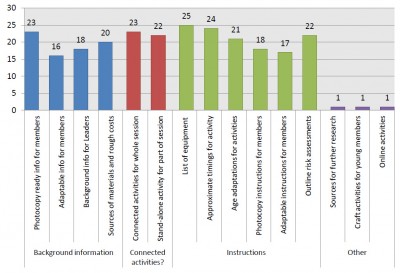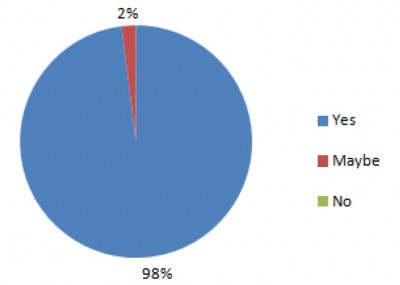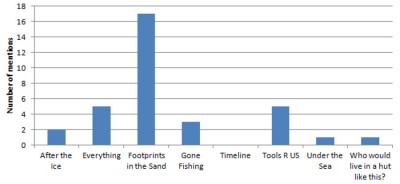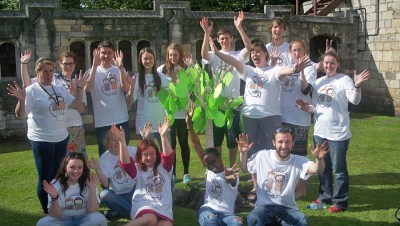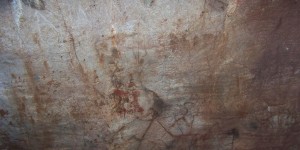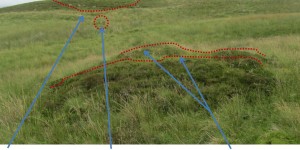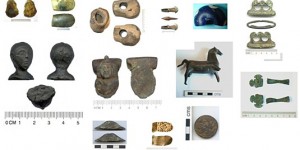The Mesolithic period has often been seen as a poor relation to the other Stone Age periods: the Palaeolithic and Neolithic. Despite the term ‘Mesolithic’ being coined in the mid-19th Century (Westropp 1866, 289), only one year after Lubbock proposed his definitions of the Palaeolithic and Neolithic (Lubbock 1865), it was not widely acknowledged until Grahame Clark published his work The Mesolithic Age in Britain in the 1930s (Clark 1932). This slow acceptance of a Mesolithic period delayed the take-up of research, and the perception of the Mesolithic has arguably suffered ever since.
In recent years, work has demonstrated what the Mesolithic has to offer; as shown by the two most recent publications from the International Conferences on the Mesolithic in Europe (Larsson et al. 2003; McCarten et al. 2009). However, public understanding of the Mesolithic period is sadly trailing behind the boom in academia. Recent reporting on a Mesolithic settlement site in The Telegraph (The Telegraph 2012) featuring a cartoon of a club-wielding cave man is a vivid example of how public understanding of the period is conditioned by outdated perceptions.
Therefore, a team of postgraduate and undergraduate students from the Archaeology Department at York, led by Emily Hellewell, have been running a public engagement project to increase the public awareness of the Mesolithic and to generate interest amongst a new generation of potential archaeologists.
The Project
Funded by the central Researcher Development Team at the University of York, the project draws on Hellewell’s experience working with the Young Archaeologists’ Club (YAC). It aims to increase the awareness of the Mesolithic period in children aged 8 to 16 years, primarily through the production and dissemination of a suite of specially designed activities based on life in the Mesolithic, and to, therefore, communicate cutting edge research to a wider audience than is usually reached by academic publications.
The main objectives of the project are to create a high quality resource pack containing activity ideas and background information to support facilitators in delivering the activities to young people. The aim is to make this resource pack available to the 70 local YAC branches based all over the UK, as well as YAC Institutional Members and local schools. The pack is also designed to be made available to download online, on our dedicated website (Life in the Mesolithic 2012). The final objective of the project is to deliver some of the activities to young people at public events including an open day at our Archaeology Department.
The Activities
A range of activities, based on Mesolithic Archaeology, were designed by a team of students during spring 2012. These activities aim to communicate something about Mesolithic life and archaeology to young people. However, it is central to the design that these activities are fun and engaging rather than having specific learning outcomes. They are considered to be successful purely because the participant enjoys doing them, and are made aware of the Mesolithic through them, rather than because it can be proven that they have learnt particular facts about the period.
Briefly, the activities include: Timeline of the Mesolithic, where people are encouraged to think about how long ago the Mesolithic actually was; Footprints in the Sand, based on the human footprints found in the Severn Estuary (Bell 2007); Tools R Us, which introduces the Mesolithic flint technology of microliths, and gets young people to think about how they might have been hafted; and After the Ice, where the concept of isostatic uplift and the changes this would have made to people’s lives during the Mesolithic is covered. Other activities include underwater archaeology, Mesolithic structures and fishing in the Mesolithic.
Activity Days
Delivering the newly designed Mesolithic activities to members of the public was a central objective of the project, in order to demonstrate that we could introduce people to the period in a fun and informal way.
Over the summer of 2012, the team delivered the activities to three different events: a dedicated open day in York’s Archaeology Department, as part of the Festival of British Archaeology; a York Festival of Ideas Fringe Event organised by the Humanities Research Centre (HRC); and the Star Carr Festival held in Scarborough.
During these events the activities, delivered by volunteers, encouraged children and young people to drop in and have a go as they pleased. There was no charge for entry to any of the three events over the summer, or for participating in any of the activities.
Since the completion of the open days, the team has been invited to participate in planned events for next summer, including a similar Festival of Ideas Fringe Event organised by the HRC, and an event organised by a local Council for British Archaeology (CBA) group. This is testament to the success of the activity days, which is further discussed below.
Resource Pack
The activities will all feature in a resource pack which will be launched this year and made available on the project website (Life in the Mesolithic 2012). The resource pack’s design has been influenced by a survey of YAC volunteer leaders conducted in spring 2012 in which we asked them what aspects of the Mesolithic they would like to know more about, and what made a good resource. The range of responses to what makes a good branch resource (Figure ) indicated that an important consideration is that the activities and resources are adaptable, reflecting each branch’s individual needs.
It is hoped that the resource pack will be widely used by the YAC leaders; not only because it has been specifically designed with them in mind, but also because they have been instrumental in influencing the design of the pack through the results of the survey. Full results and analysis of the survey are available on the project website (Life in the Mesolithic 2012).
Impact of the Project
There is an increasing drive towards engaging the public with the results of academic research, championed by the Research Councils UK, who are trying to create a: “culture where public engagement is regarded as an important and essential activity by the research community” (Research Councils U.K. 2012). As part of this push in public engagement it is also becoming increasingly important to demonstrate the impact of the engagement work being undertaken.
In order to demonstrate the impact of this project, feedback questionnaires were completed at each of the three activity open days. The success of the activities was clear with 98% of respondents saying that they enjoyed learning about the Mesolithic (Figure 2). Feedback from the open day at our Department (Figure 3), during which all seven activities were run, shows that the children particularly liked the Footprints in the Sand activity. However, the Timeline of the Mesolithic activity was not mentioned by the children at any of the activity days (Figure 3), and this is perhaps due to the fact that it was a non-interactive activity designed to be browsed and read; a format which is not as appealing to children. An alternative form of the activity has been designed and tested with the York YAC branch, which involves young people thinking about events to place on the timeline, and was very successful. This alternate format will be the one presented in the activity pack. The testing of the activities at the activity days has therefore been an important part of the development process for the resource pack.
Further, less quantitative impacts of the project have also been identified. The resource pack will be launched at the YAC leaders training event in March 2013, where members of our team will demonstrate how to run the activities to the YAC branch leaders. Involvement in training of this kind emphasises the positive reception that the project has had by YAC, and its parent organisation the CBA. Additionally, an opportunity for us to directly demonstrate our activities to YAC leaders will hopefully encourage them to use the resource packs in their branches, thus widening the perception of the Mesolithic period amongst young people, and increasing the impact of the project. Take-up of the activities by branch leaders will be monitored after the launch as a means of quantitatively gauging the long-tern impact of the project.
An additional unexpected outcome of the project was that the team of volunteers involved all indicated that they had benefitted from the volunteering, and will hopefully continue to be involved as the project continues. Feedback from the adults at the July activity day in King’s Manor stated that the staff at the event had been one of the most positive things about the day. One person stated that the staff:
“Explained complicated subjects very well”, with another saying that they were:
“Helpful and really good with my 5 year old”
These positive responses demonstrate the high quality of volunteering at the event in which people felt empowered to learn, and this has to reflect the engagement that the volunteers themselves felt with the project.
Impact can also be seen in the contacts made with local school teachers as a result of the events with the aim of assisting with an after-school club in the future, and the fact that the project is increasingly being involved in plans made by the Star Carr Project to run a continuing public engagement programme in the next few years.
Conclusion
It is hoped that the success and impact of the work discussed here can have a long-term impact on the awareness of the Mesolithic period beyond the original scope of this project. The activities designed will be available for anyone to replicate, whether that be in a YAC branch, after-school club, activity day, or in people’s homes.
Whilst the levels of learning about the Mesolithic as a result of these activities cannot be controlled, an increase in awareness will hopefully lead people to finding out more about this period. Our next challenge will be to make sure that we meet this newly developed interest with further events, activities, and resources, to further promote the period.
Acknowledgements
This public engagement work would not have been possible without the funding provided by the Researcher Development Team and Humanities Research Centre, both at the University of York; the Vale of Pickering Research Trust; and Hanson UK. I would also like to thank the YAC branch leaders for their helpful responses to our survey about the Mesolithic. A special thank you goes to the team of volunteers who helped to develop the activities, and who worked so hard during each of the activity days, they are: Jenny Borrett, Beth Campbell, Ben Elliott, Jon Finch, Amy Gray Jones, John Griffiths, Andy Hellewell, Kirsty High, Robyn Inglis, Becky Knight, Carol Lang, Suzanne Lilley, George Loffman, Khadija Mcbain, Jessica Murray, Harry Robson, Jo Simpson, Wendi Terry, Rianca Vogels and Helen Williams.
Bibliography
- Bell, M. (2007) Prehistoric Coastal Communities: The Mesolithic in western Britain. York: Council for British Archaeology
- Clark, J. G. D. (1932) The Mesolithic Age in Britain. Cambridge: The University Press
- Larsson, L., Kindgren, H., Knutsson, K., Leoffler, D. and Åkerlund, A. (2003) Mesolithic on the Move. Oxford: Oxbow Books
- Life in the Mesolithic (2012) 'Life in the Mesolithic: Engaging Young People with the Mesolithic'. www.lifeinthemesolithic.wordpress.com [Accessed 17th December 2012]
- Lubbock, J. (1865) Prehistoric Times as illustrated among the manners and customs of modern savages. London: Williams & Northgate
- McCarten, S., Schulting, R. J., Warren, G. and Woodman, P. (2009) Mesolithic Horizon. Oxford: Oxbow Books
- Research Councils U.K. (2012) 'RCUK Public Engagement'. http://www.rcuk.ac.uk/per/Pages/Home.aspx [Accessed 19th December 2012]
- The Telegraph (2012) 'Stone age man first settled near Liverpool'. http://www.telegraph.co.uk/earth/environment/archaeology/9688122/Stone-a... [Accessed 17th December 2012]
- Westropp, H. (1866) 'On the analogous forms of implements amongst early and primitive races'. Memoirs of the Anthropological Society of London. 11. 288-293


